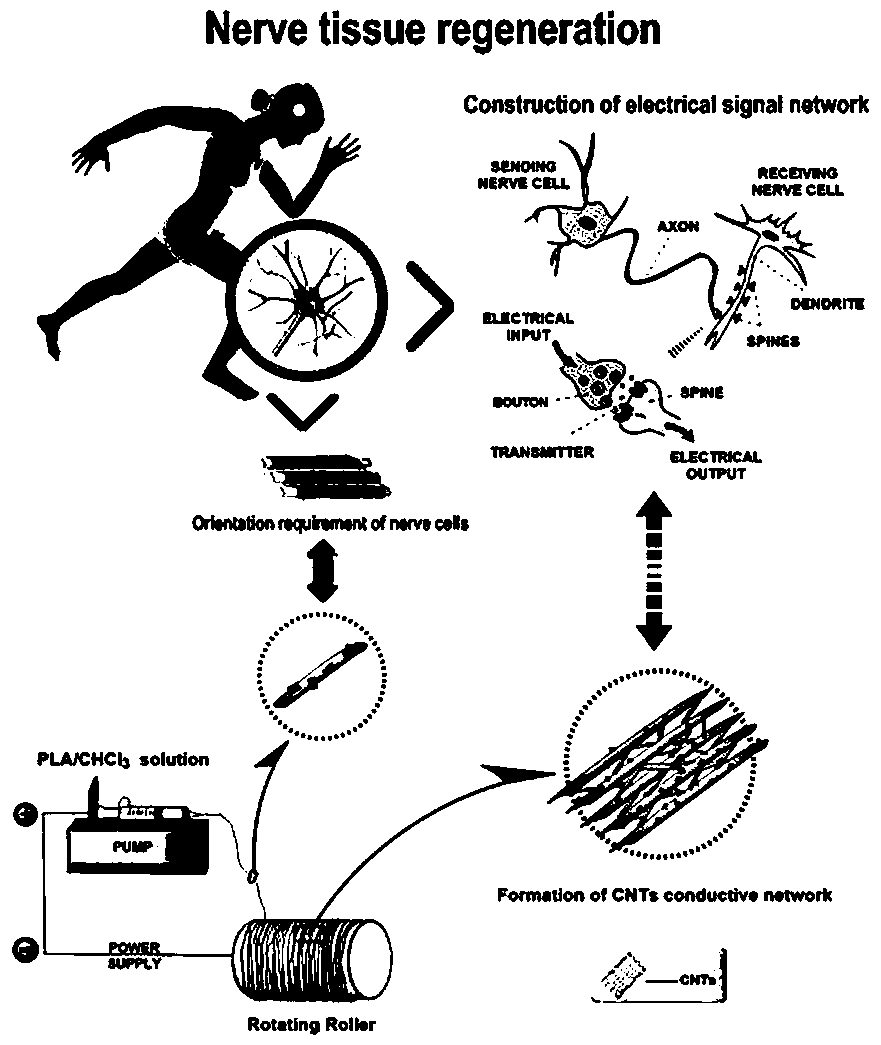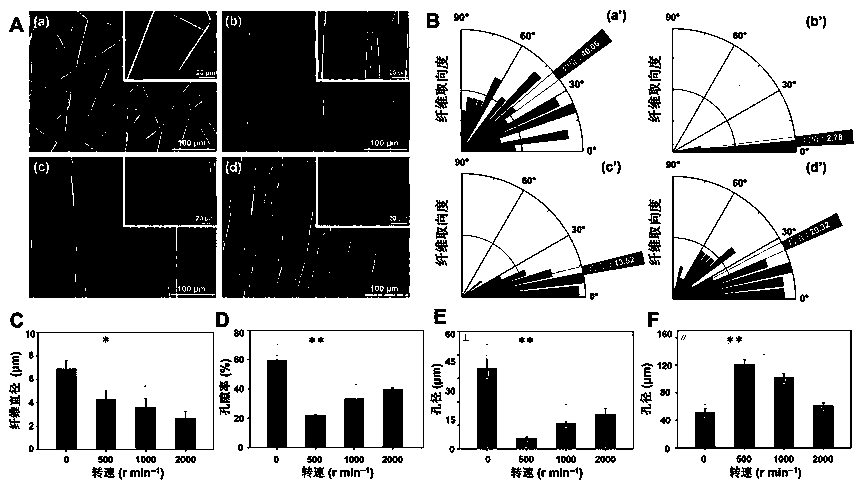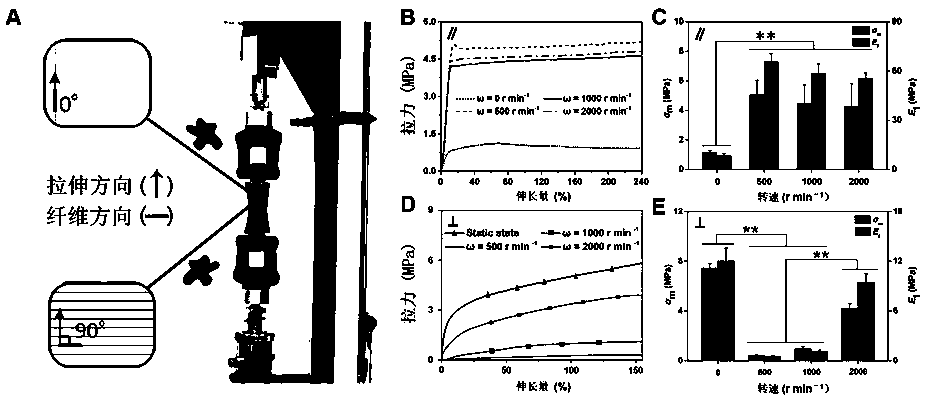Preparation method of PCL (polycaprolactone)/CNTs (carbon nanotubes) compound electrospun film
A technology of electrospinning and mixed solution, applied in the field of materials science, to improve repair efficiency, promote neuronal differentiation, and enhance electrical activity
- Summary
- Abstract
- Description
- Claims
- Application Information
AI Technical Summary
Problems solved by technology
Method used
Image
Examples
Embodiment 1
[0041] (1) Weigh a certain amount of polycaprolactone (PCL) and dissolve it in chloroform, stir for 24 h until the solution is uniform and transparent, and the concentration of PCL is 10 wt.%;
[0042] (2) In order to prepare PCL / CNTs composite electrospun fibers, a certain concentration of CNTs was added to the polymer solution (10wt.%), and the CNTs were kept in a good dispersion state by continuous ultrasonication for 30 minutes;
[0043] (3) Inhale PCL or PCL / CNTs solution into a 10 mL plastic syringe, press 0.10 mm·min –1 Launched, the high-voltage power supply applied an electric field of 15 kV during the spinning process;
[0044] (4) The obtained PCL or PCL / CNTs electrospun was collected on a metal cylindrical roller 14 cm away from the needle tip (D=16 cm, L=22 cm);
[0045] (5) In order to obtain oriented fibers, set the rotation speed of the drum collection device to 1000 rpm, and control the thickness of the final electrospun fiber membrane to 150 μm;
[0046] (6...
Embodiment 2
[0048] (1) Weigh a certain amount of polycaprolactone (PCL) and dissolve it in chloroform, stir for 24 h until the solution is uniform and transparent, and the concentration of PCL is 12 wt.%;
[0049] (2) In order to prepare PCL / CNTs composite electrospun fibers, a certain concentration of CNTs was added to the polymer solution (10wt.%), and the CNTs were kept in a good dispersion state by continuous ultrasonication for 30 minutes;
[0050] (3) Inhale PCL or PCL / CNTs solution into a 10 mL plastic syringe, press 0.10 mm·min –1 Launched, the high-voltage power supply applied an electric field of 15 kV during the spinning process;
[0051] (4) The obtained PCL or PCL / CNTs electrospun was collected on a metal cylindrical roller 14 cm away from the needle tip (D=16 cm, L=22 cm);
[0052] (5) In order to obtain oriented fibers, set the rotation speed of the drum collection device to 1000 rpm, and control the thickness of the final electrospun fiber membrane to 160 μm;
[0053] (6...
Embodiment 3
[0055] (1) Weigh a certain amount of polycaprolactone (PCL) and dissolve it in chloroform, stir for 24 h until the solution is uniform and transparent, and the concentration of PCL is 10 wt.%;
[0056] (2) In order to prepare PCL / CNTs composite electrospun fibers, a certain concentration of CNTs was added to the polymer solution (15wt.%), and the CNTs were kept in a good dispersion state by continuous ultrasonication for 30 minutes;
[0057] (3) Inhale PCL or PCL / CNTs solution into a 10 mL plastic syringe, press 0.10 mm·min –1 Launched, the high-voltage power supply applied an electric field of 15 kV during the spinning process;
[0058] (4) The obtained PCL or PCL / CNTs electrospun was collected on a metal cylindrical roller 14 cm away from the needle tip (D=16 cm, L=22 cm);
[0059] (5) In order to obtain oriented fibers, set the rotation speed of the drum collection device to 1000 rpm, and control the thickness of the final electrospun fiber membrane to 165 μm;
[0060] (6...
PUM
| Property | Measurement | Unit |
|---|---|---|
| diameter | aaaaa | aaaaa |
| length | aaaaa | aaaaa |
| thickness | aaaaa | aaaaa |
Abstract
Description
Claims
Application Information
 Login to View More
Login to View More - R&D
- Intellectual Property
- Life Sciences
- Materials
- Tech Scout
- Unparalleled Data Quality
- Higher Quality Content
- 60% Fewer Hallucinations
Browse by: Latest US Patents, China's latest patents, Technical Efficacy Thesaurus, Application Domain, Technology Topic, Popular Technical Reports.
© 2025 PatSnap. All rights reserved.Legal|Privacy policy|Modern Slavery Act Transparency Statement|Sitemap|About US| Contact US: help@patsnap.com



